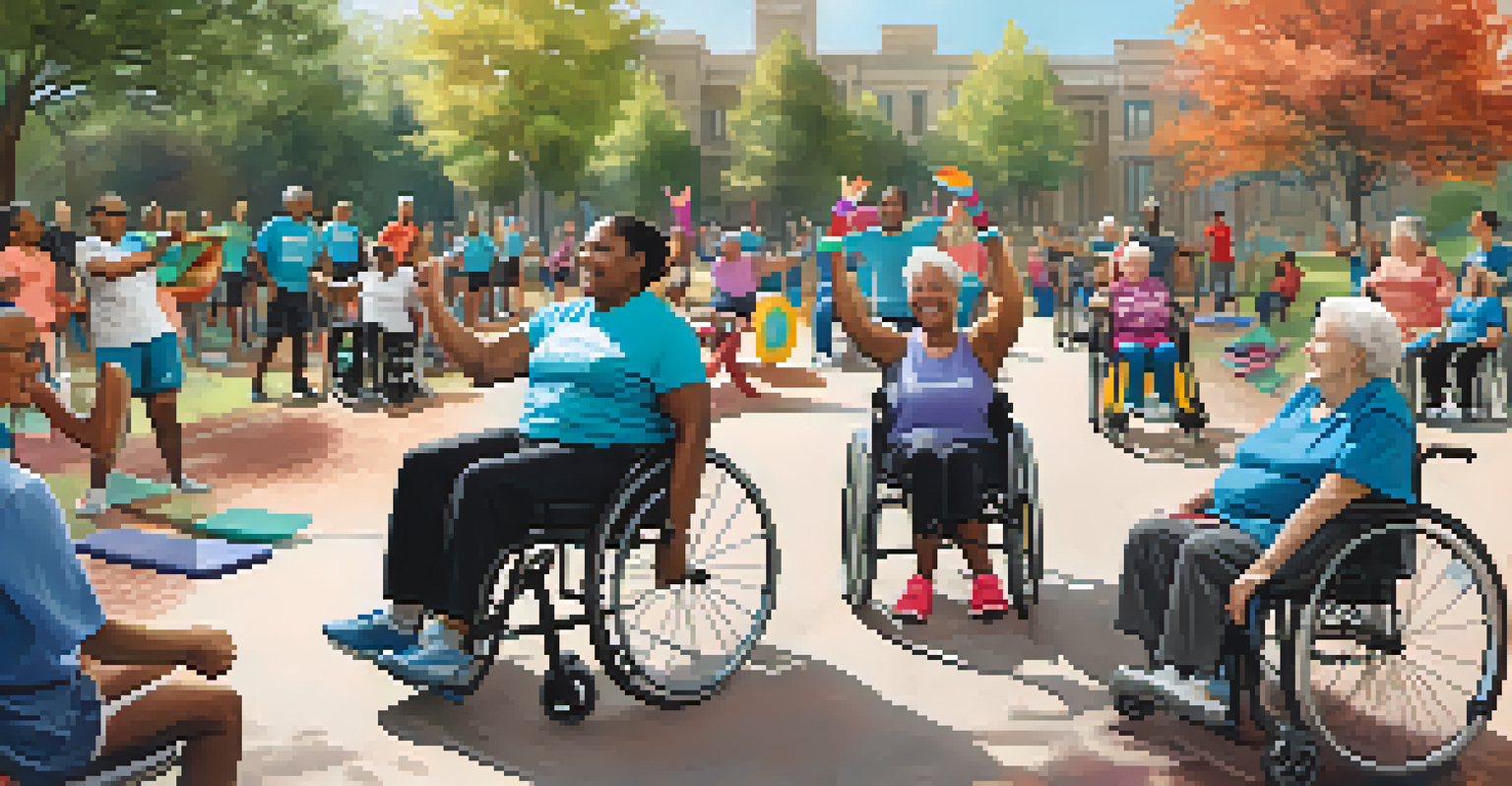The Importance of Physical Activity in Community Health Initiatives

Understanding Community Health Initiatives
Community health initiatives aim to improve the health and well-being of populations. They address various factors, such as access to healthcare, nutrition, and physical activity. By fostering a healthier environment, these initiatives can significantly reduce chronic diseases and enhance the quality of life.
The greatest wealth is health.
These programs often involve collaboration between local health departments, community organizations, and residents. The goal is to create a supportive network that encourages individuals to engage in healthier behaviors. Understanding the core components of these initiatives is essential for developing effective strategies.
One crucial element is promoting physical activity, which directly impacts overall health. As we explore the significance of physical activity, we can see how it serves as a foundation for many community health initiatives.
The Physical Activity Landscape
Physical activity encompasses any movement that requires energy, from walking to organized sports. The Centers for Disease Control and Prevention (CDC) recommend at least 150 minutes of moderate aerobic activity weekly for adults. Despite these guidelines, many community members fall short, often due to barriers like lack of access or motivation.

Creating opportunities for physical activity within the community can help combat these barriers. This may include building parks, offering exercise classes, or organizing community sports teams. When people are encouraged and provided with the means to be active, they are more likely to engage in physical activity regularly.
Community Health Initiatives Matter
These initiatives enhance health by addressing access to healthcare, nutrition, and physical activity within communities.
Understanding the landscape of physical activity helps identify gaps and opportunities. By assessing the needs of the community, health initiatives can tailor programs that effectively encourage active lifestyles.
Benefits of Physical Activity on Health
Regular physical activity offers myriad health benefits, including improved cardiovascular health, stronger muscles, and enhanced mental well-being. Engaging in physical activity can also reduce the risk of chronic conditions like obesity, diabetes, and heart disease. These benefits extend beyond individuals, positively impacting community health as a whole.
It is health that is real wealth and not pieces of gold and silver.
Moreover, exercise releases endorphins, which can help alleviate feelings of stress and anxiety. This mental health boost is vital in our fast-paced world, where many struggle with mental health issues. By prioritizing physical activity, communities can foster a healthier and happier population.
These health benefits highlight the importance of integrating physical activity into community health initiatives. When residents experience improved health outcomes, the entire community thrives.
Creating Inclusive Physical Activity Opportunities
Inclusivity is key when designing community health initiatives focused on physical activity. Programs must accommodate all ages, abilities, and backgrounds to ensure everyone can participate. This might include adaptive equipment for individuals with disabilities or programs tailored for seniors.
When communities provide inclusive opportunities, they empower individuals to engage in physical activity without fear of judgment or exclusion. This sense of belonging encourages consistent participation and fosters stronger community bonds. Inclusivity ensures that health initiatives resonate with a diverse audience.
Inclusivity Drives Participation
Creating inclusive physical activity opportunities ensures that everyone, regardless of age or ability, can engage and benefit.
By embracing inclusivity, we can create a culture of health that invites everyone to join in. Ultimately, this collective effort strengthens community ties and enhances overall well-being.
Engaging the Community in Physical Activity
Community engagement is vital for the success of health initiatives focused on physical activity. Involving residents in the planning and implementation process fosters a sense of ownership. When people feel invested in the outcome, they are more likely to participate actively.
Organizing events such as fun runs, community sports leagues, or group fitness classes can spark interest and excitement. These activities not only encourage physical activity but also strengthen relationships among community members. Participation becomes more than just exercise; it becomes a way to connect and build friendships.
Engaging the community in these initiatives ensures they meet the unique needs of the people they serve. This collaborative approach maximizes participation and enhances the overall impact of health initiatives.
The Role of Technology in Promoting Activity
In today's digital age, technology plays a significant role in promoting physical activity. Mobile apps, fitness trackers, and online communities can inspire and motivate individuals to stay active. These tools offer a sense of accountability and provide resources for setting and achieving fitness goals.
Local health initiatives can leverage technology to reach a broader audience, particularly younger generations. By incorporating social media challenges or virtual fitness classes, communities can create fun and engaging ways to promote physical activity. This modern approach appeals to a tech-savvy population, encouraging participation.
Technology Boosts Engagement
Leveraging technology can enhance community health initiatives by making physical activity more accessible and appealing to all.
Utilizing technology can enhance traditional physical activity initiatives, making them more accessible and appealing. By embracing these tools, communities can foster a culture of health that resonates with everyone.
Measuring Success in Community Health Initiatives
To understand the effectiveness of community health initiatives focused on physical activity, measuring success is crucial. This can involve tracking participation rates, health outcomes, and community feedback. By analyzing this data, health professionals can identify what works and what needs improvement.
Surveys and assessments can provide insights into participant experiences and barriers they encounter. This information is invaluable for refining programs and ensuring they effectively meet community needs. Continuous evaluation fosters a cycle of growth, ultimately enhancing the initiatives' impact.

Measuring success not only highlights achievements but also encourages accountability. When communities see positive results, it motivates ongoing engagement and commitment to health initiatives.